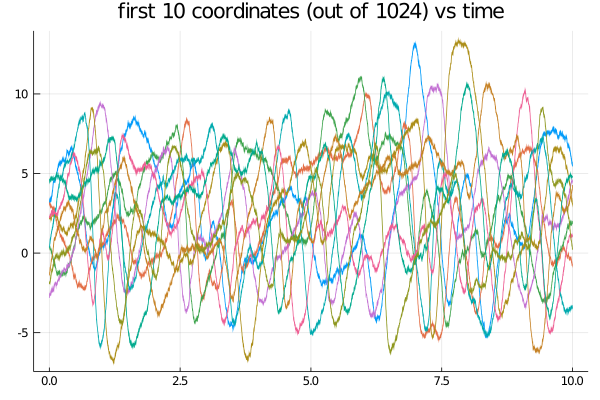Lorenz '96 system
A model of atmospheric convection where each coordinate of the $D$-dimensional process $X$ corresponds to a position on a periodic lattice that is supposed to be a proxy for a latitude circle on Earth. The diffusion $X$ is defined as a solution to the following system of SDEs:
with $i\in\{1,\dots,D\}$ a cycling index. The process can be called with
@load_variable_diffusion :Lorenz96 Dwhere $D$ is a positive integer, indicating chosen dimension.
Example
@load_variable_diffusion Lorenz96 2^10
θ = [8.0, 1.0]
P = Lorenz96(θ...)
tt, y1 = 0.0:0.001:10.0, 9.0.*rand(SVector{2^10,Float64}).-3.0
X = rand(P, tt, y1)
plot(X, Val(:vs_time), coords=1:10, label="", title="first 10 coordinates (out of 1024) vs time")
If you've done the steps above on your laptop as well, you will have noticed how slow the compilation of the code above took. The reason is that StaticArrays are not designed to work for vectors of size 100+. For this reason it is much better to use in-place versions of samplers. This can be done by changing the default types and then starting from an appropriately changed starting point.
const DD = DiffusionDefinition
DD.default_type(::Lorenz96) = Vector{Float64}
DD.default_wiener_type(::Lorenz96) = Vector{Float64}
y1 = 9.0.*rand(2^10).-3.0
X = rand(P, tt, y1)